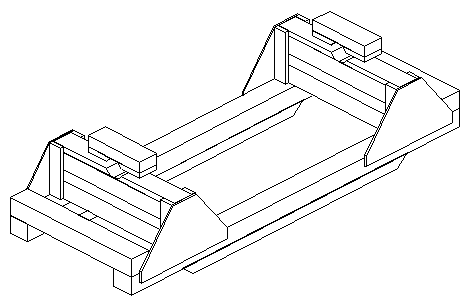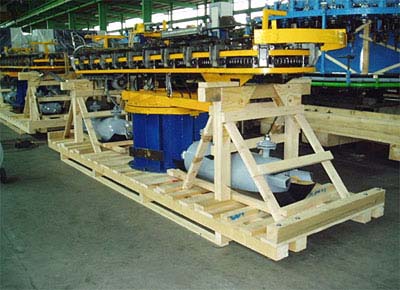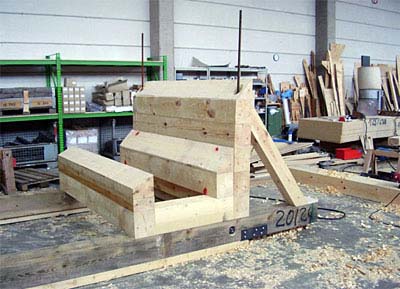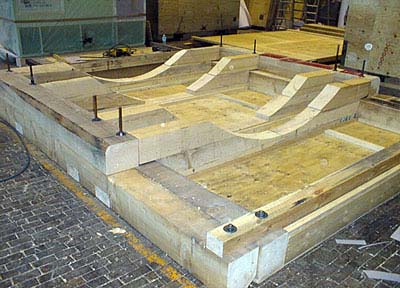Sleds represent individual partial packaging with a floor constructed on the same principles as boxes/crates, but usually with no walls or lid. A sled construction is made up of longitudinal or transverse skids or runners with battens, supports and saddles positioned at right angles to the longitudinal skids. The number of longitudinal skids depends on the width of the package, the net weight and the bending stresses that occur during handling. Apart from this, the distances between the longitudinal skids are the same as for the floors of boxes and crates. Sleds for heavy goods can also be a combination of lumber and steel components. In the case of extremely large packaged goods, such as long cylinders, shafts etc. sleds are also designed as partial packaging. In order to reduce the risk of tipping, sleds should always be at least as wide as the packaged goods, and preferably wider in order to avoid knocking the packaged goods when stowing alongside other packages If possible, the packaged goods are secured to the sleds by bolting. If the option of bolting is not available, the packaged goods must be secured using cut-lumber clamps or steel or plastic tightening straps with integrated tensioning elements (turnbuckles). Round packaged goods must always be supported in specially designed cradles. In the case of extremely heavy goods, the contact surface in the cradles must be dimensioned in such a way as to ensure that the crushing resistance of the lumber is not exceeded. Where necessary, hardwood must be used. The basis for assessing this is given by the weight forces of the packaged goods and the additional maximum vertical dynamic transport loads. Wherever possible, the packaged goods must be secured to the sleds to form a tight fit. If friction securing is used, for instance with continuous cylindrical packages secured by cut-lumber clamps and saddle supports, friction-enhancing intermediate layers must be used to increase the frictional forces to prevent movement between the packaged goods and the sled. The dynamic horizontal loads to be expected must be taken into account in this context. 
Figure 107: Example of a sled construction as load-bearing packaging with 
Figure 108: Sled construction with packaged goods for shipment by container It is easier to stow the sled construction by pushing it into place if the transverse skids are replaced by runners and if these are also chamfered at the ends (see also Figure 107). 
Figure 109: End support for a heavy packaged item on a sled 
Figure 110: Specially fitted support for a round component on a sled construction |
| Top of pageContents |
